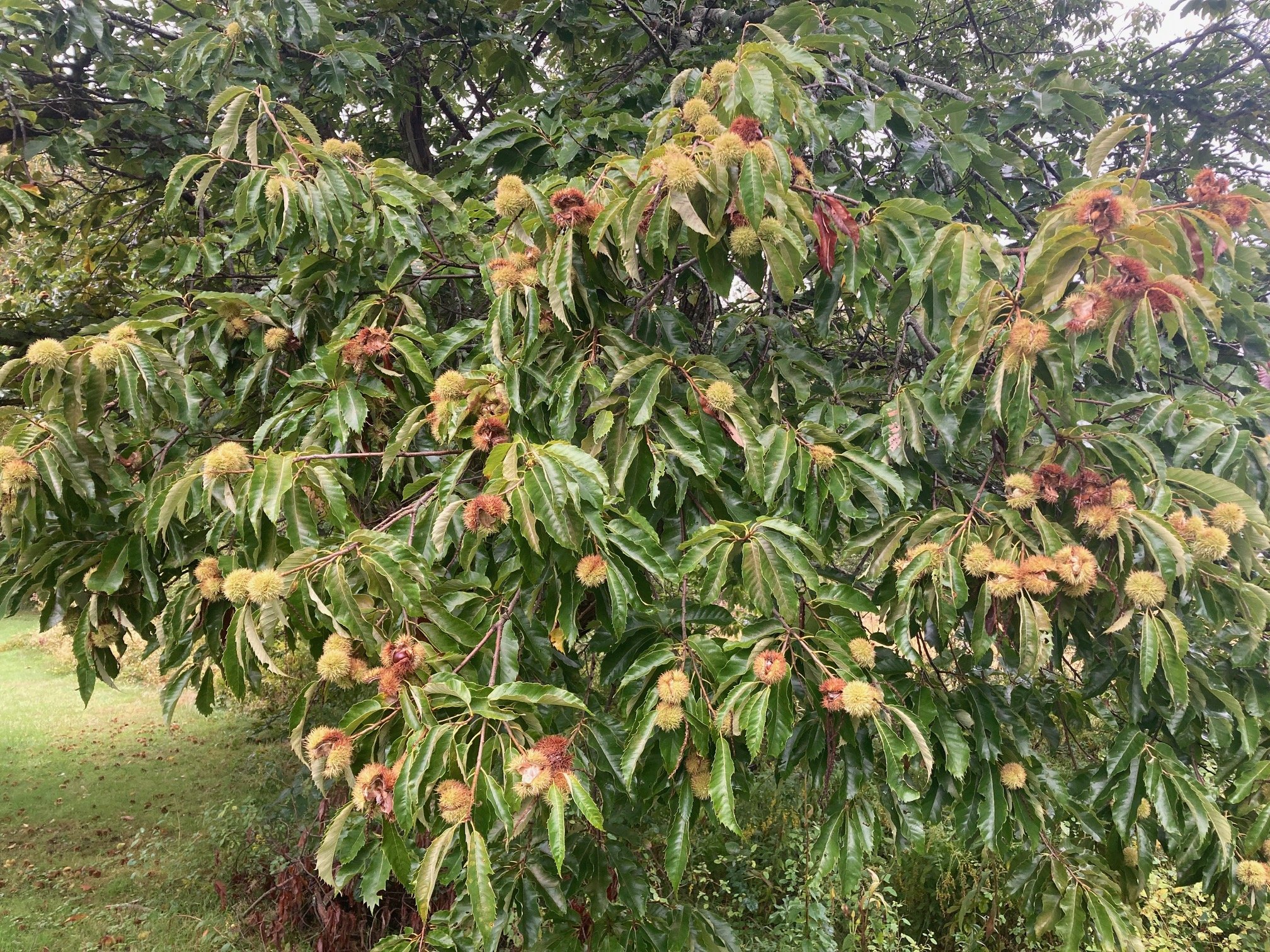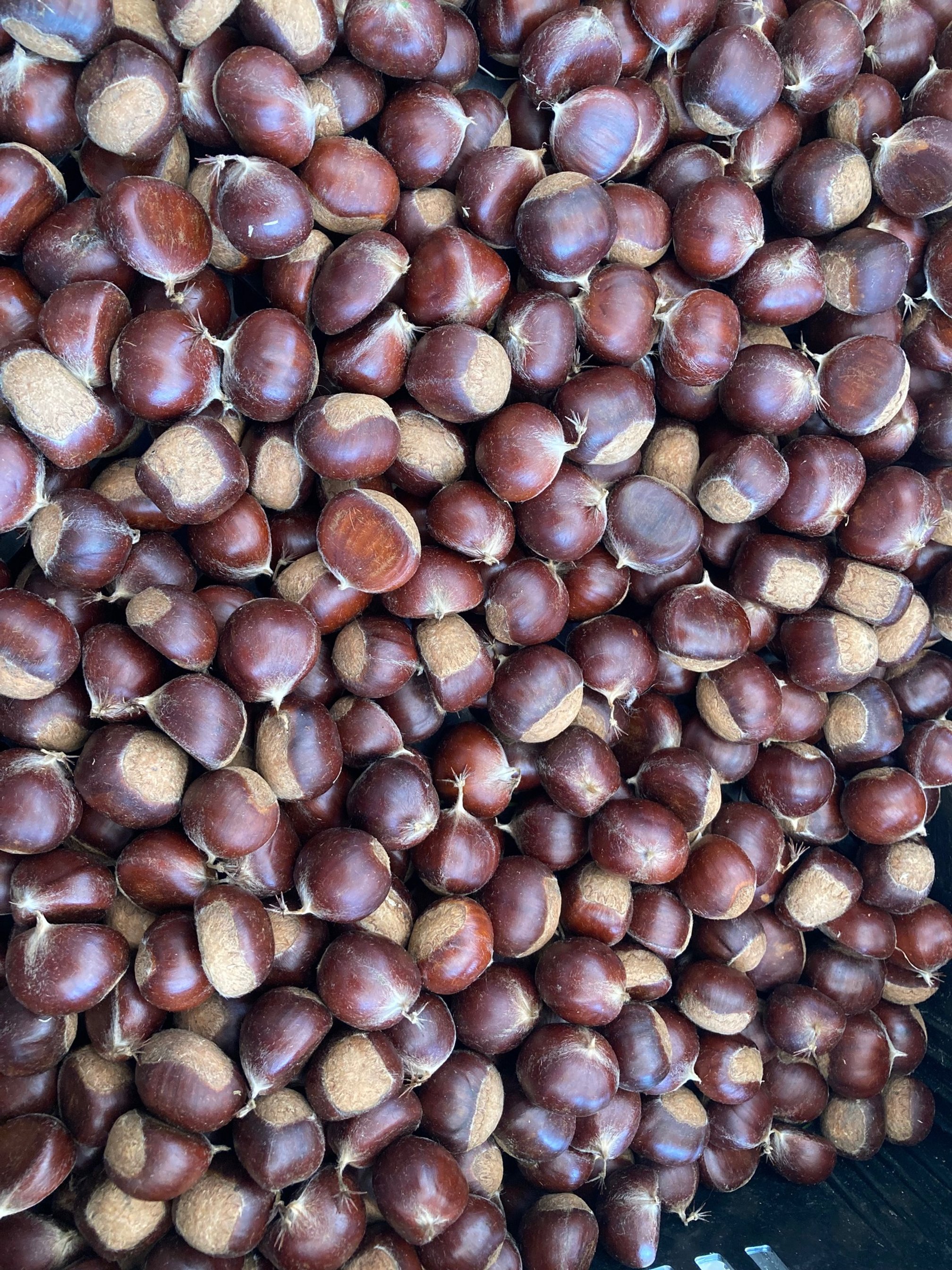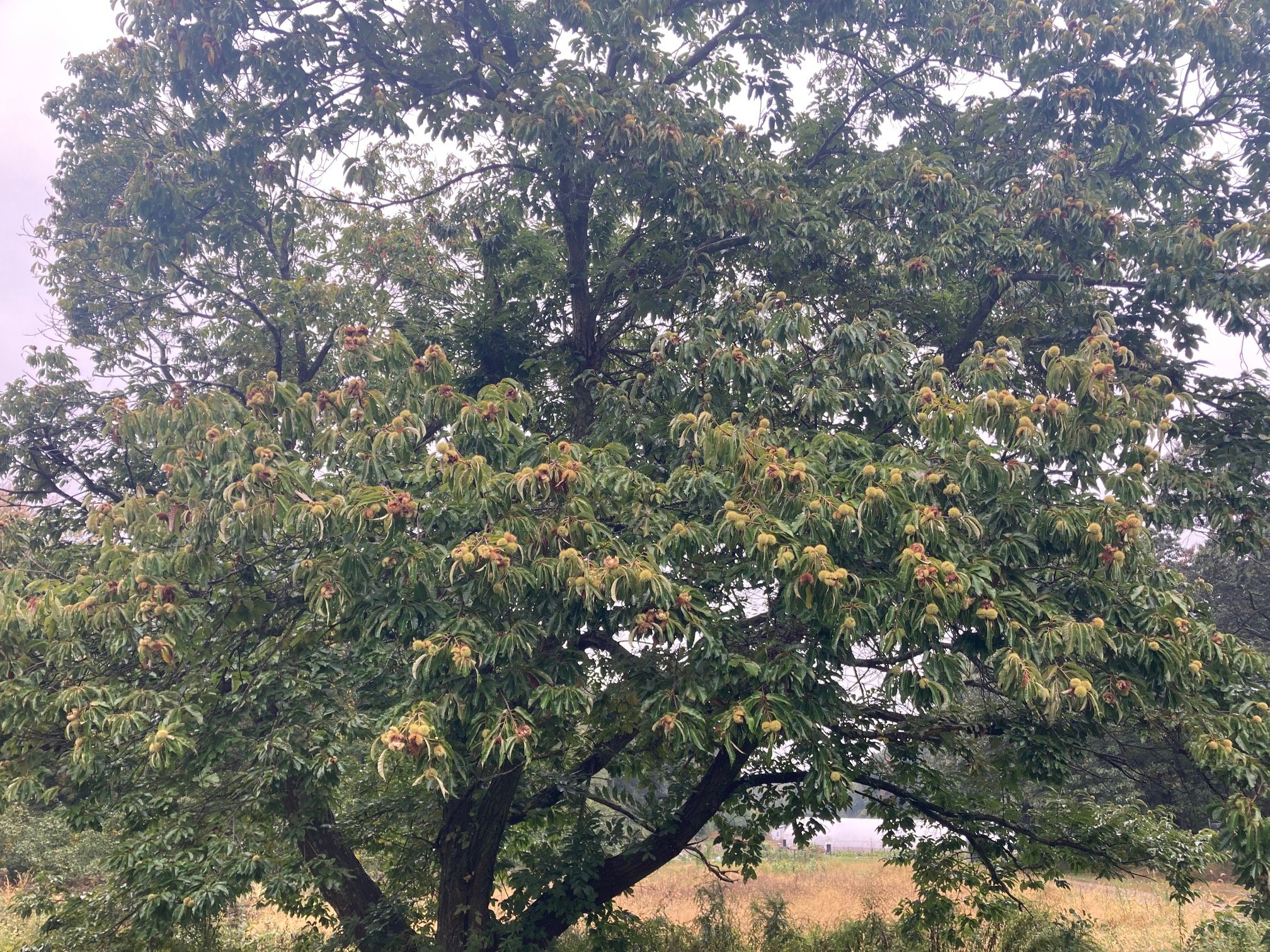 Image 1 of 4
Image 1 of 4

 Image 2 of 4
Image 2 of 4

 Image 3 of 4
Image 3 of 4

 Image 4 of 4
Image 4 of 4

Chestnut
Chestnut trees are one of the true champions of the permaculture food forest world! Chestnuts flower after the risk of frost so they provide dependable annual crops of nuts. Whereas most other nuts are protein and fat, chestnuts provide starches and carbohydrates, making them a staple food akin to wheat or corn, yet without the annual tillage and spraying that those crops require. This is one of my favorite foods to harvest! Beautiful, wide growing trees have glossy leaves, long silvery flower spikes and decorative burrs. We offer a diverse, blight resistant mix of trees ranging from pure Chinese Chestnut, pure Japanese Chestnut, and also hybrid trees with a mix of the fabled American Chestnut genes. Excellent lumber with great rot-resistance. A supreme wildlife and livestock tree! We’re really inspired to be a part of the growing movement to return Chestnuts to the forests and landscapes of North America! This stately tree has been under-represented in our forests and orchards…..lets change that! At least two trees are required for pollination
Chinese Chestnut - A wide, spreading tree bearing small but sweet chestnuts. The shorter stature makes for easier harvest and landscape design. Blight Resistant
Japanese Chestnut - Nuts are much larger than the Chinese, otherwise the trees are very similar. Blight Resistant
Hybrid Chestnut- A mix of American, Chinese, Japanese, and European. The Asian genetics confer resistance to chestnut blight while the American genes offer a taller timber-form tree, plus sweeter nuts and more rot resistant lumber.
Zones 4-9
Ships as a dormant bare root tree, between 1.5-2 ft. tall
Chestnut trees are one of the true champions of the permaculture food forest world! Chestnuts flower after the risk of frost so they provide dependable annual crops of nuts. Whereas most other nuts are protein and fat, chestnuts provide starches and carbohydrates, making them a staple food akin to wheat or corn, yet without the annual tillage and spraying that those crops require. This is one of my favorite foods to harvest! Beautiful, wide growing trees have glossy leaves, long silvery flower spikes and decorative burrs. We offer a diverse, blight resistant mix of trees ranging from pure Chinese Chestnut, pure Japanese Chestnut, and also hybrid trees with a mix of the fabled American Chestnut genes. Excellent lumber with great rot-resistance. A supreme wildlife and livestock tree! We’re really inspired to be a part of the growing movement to return Chestnuts to the forests and landscapes of North America! This stately tree has been under-represented in our forests and orchards…..lets change that! At least two trees are required for pollination
Chinese Chestnut - A wide, spreading tree bearing small but sweet chestnuts. The shorter stature makes for easier harvest and landscape design. Blight Resistant
Japanese Chestnut - Nuts are much larger than the Chinese, otherwise the trees are very similar. Blight Resistant
Hybrid Chestnut- A mix of American, Chinese, Japanese, and European. The Asian genetics confer resistance to chestnut blight while the American genes offer a taller timber-form tree, plus sweeter nuts and more rot resistant lumber.
Zones 4-9
Ships as a dormant bare root tree, between 1.5-2 ft. tall
Chestnut trees are one of the true champions of the permaculture food forest world! Chestnuts flower after the risk of frost so they provide dependable annual crops of nuts. Whereas most other nuts are protein and fat, chestnuts provide starches and carbohydrates, making them a staple food akin to wheat or corn, yet without the annual tillage and spraying that those crops require. This is one of my favorite foods to harvest! Beautiful, wide growing trees have glossy leaves, long silvery flower spikes and decorative burrs. We offer a diverse, blight resistant mix of trees ranging from pure Chinese Chestnut, pure Japanese Chestnut, and also hybrid trees with a mix of the fabled American Chestnut genes. Excellent lumber with great rot-resistance. A supreme wildlife and livestock tree! We’re really inspired to be a part of the growing movement to return Chestnuts to the forests and landscapes of North America! This stately tree has been under-represented in our forests and orchards…..lets change that! At least two trees are required for pollination
Chinese Chestnut - A wide, spreading tree bearing small but sweet chestnuts. The shorter stature makes for easier harvest and landscape design. Blight Resistant
Japanese Chestnut - Nuts are much larger than the Chinese, otherwise the trees are very similar. Blight Resistant
Hybrid Chestnut- A mix of American, Chinese, Japanese, and European. The Asian genetics confer resistance to chestnut blight while the American genes offer a taller timber-form tree, plus sweeter nuts and more rot resistant lumber.
Zones 4-9
Ships as a dormant bare root tree, between 1.5-2 ft. tall
